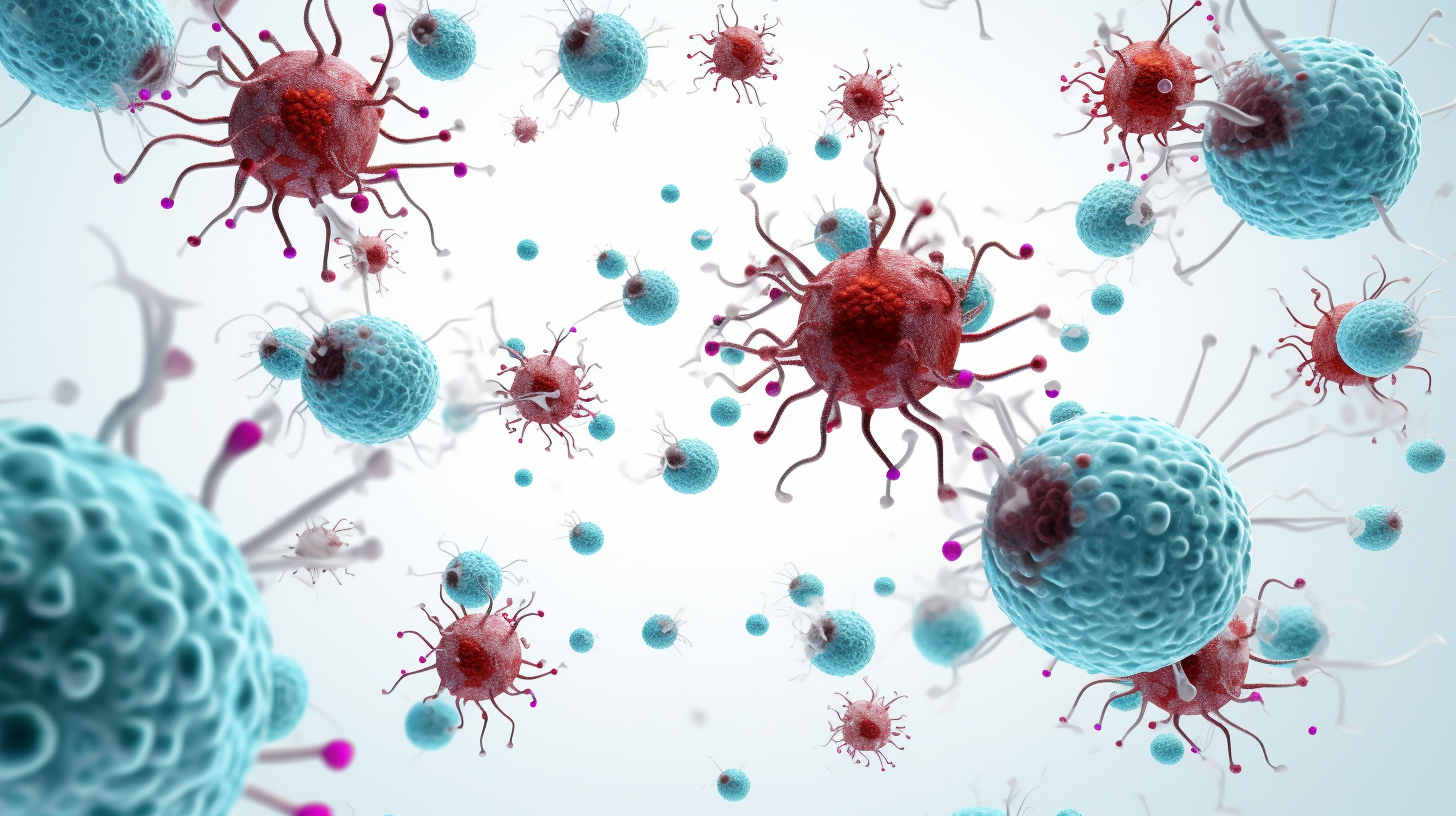Structural basis of the function of therapeutic antibodies in cancer immunotherapy elucidated
New study shows how the single-molecule organization of receptors in the cellular context determines the function of antibodies
Advertisement
therapeutic antibodies have revolutionized cancer treatment, but the exact molecular mechanisms that determine their therapeutic effect have so far been insufficiently investigated. A team led by Professor Ralf Jungmann (Chair of Molecular Physics of Life at LMU and head of the Molecular Imaging and Bionanotechnology research group at the Max Planck Institute of Biochemistry) has now investigated for the first time how therapeutic antibodies reshape receptor organization at the single-molecule level and how this influences the function of the antibodies.
Using Resolution Enhancement by Sequential Imaging (RESI) - a novel super-resolution microscopy technique that allows individual proteins to be visualized - the researchers have imaged the nanostructure of CD20 receptors and their interactions with widely used anti-CD20 antibodies such as rituximab and obinutuzumab.
"For the first time, we can visualize in intact cells how antibody-receptor complexes organize themselves at the single-protein level," explains Ralf Jungmann, lead author of the study, which was recently published in the journal Nature Communications. "These nanoscale patterns are closely linked to the therapeutic effect and serve as a template for the structure-based design of antibodies."
Visualizing antibody-receptor complexes with resolution at the single-protein level
Therapeutic monoclonal antibodies act via several mechanisms - they activate immune cells, activate the complement system or directly induce cell death. These effects depend on how antibodies bind to receptors on the cell surface and reorganize them. However, conventional imaging techniques lacked the resolution to visualize these arrangements in their natural cellular context.
Jungmann's team overcame this hurdle by using multi-target 3D RESI, a method in which receptors and antibodies are labeled with orthogonal DNA barcodes and visualized sequentially with sub-nanometer accuracy. In this way, the team was able to elucidate the organization of CD20 receptors and the antibodies bound to them directly on the cell membrane.
"We can now directly observe how structural changes in antibody design lead to different receptor patterns and cellular responses," says Isabelle Pachmayr, first author of the study. "This opens up new possibilities for the structure-guided development of next-generation monoclonal antibodies."
A new era for antibody research
In addition to CD20, RESI technology can be used to study almost any membrane receptor and therapeutic antibody in molecular resolution directly on intact cells. Since RESI visualizes whole cells at high throughput rates, it enables systematic analysis of antibody candidates with a resolution that was previously only possible with cryo-EM, but now directly in the cellular environment and with molecular specificity.
In the future, the team plans to combine RESI with imaging of multiple receptors and intracellular signaling molecules to map entire therapeutic processes. "For the first time, RESI combines the structure of nanoscale receptors with their function in a cellular context," summarizes Jungmann. "This technology has the potential to fundamentally change immunotherapies."
Note: This article has been translated using a computer system without human intervention. LUMITOS offers these automatic translations to present a wider range of current news. Since this article has been translated with automatic translation, it is possible that it contains errors in vocabulary, syntax or grammar. The original article in German can be found here.
Original publication
Isabelle Pachmayr, Luciano A. Masullo, Susanne C. M. Reinhardt, Jisoo Kwon, Maite Llop, Ondřej Skořepa, Sylvia Herter, Marina Bacac, Christian Klein, Ralf Jungmann; "Resolving the structural basis of therapeutic antibody function in cancer immunotherapy with RESI"; Nature Communications, Volume 16, 2025-7-23
Other news from the department science
Most read news
More news from our other portals
See the theme worlds for related content
Topic world Antibodies
Antibodies are specialized molecules of our immune system that can specifically recognize and neutralize pathogens or foreign substances. Antibody research in biotech and pharma has recognized this natural defense potential and is working intensively to make it therapeutically useful. From monoclonal antibodies used against cancer or autoimmune diseases to antibody-drug conjugates that specifically transport drugs to disease cells - the possibilities are enormous

Topic world Antibodies
Antibodies are specialized molecules of our immune system that can specifically recognize and neutralize pathogens or foreign substances. Antibody research in biotech and pharma has recognized this natural defense potential and is working intensively to make it therapeutically useful. From monoclonal antibodies used against cancer or autoimmune diseases to antibody-drug conjugates that specifically transport drugs to disease cells - the possibilities are enormous


























































